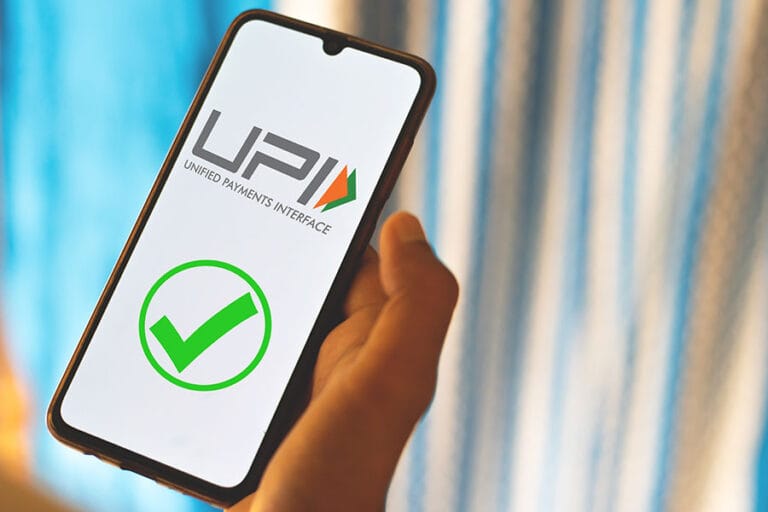UPI Fraud in India: 7 Latest Scams & How to Stay Safe
Digital payments are becoming more common, but so are UPI scams. UPI makes transactions easy, but it also attracts fraudsters.
As UPI use grows, so does fraud. Knowing the latest UPI frauds and how to protect yourself is key.
Key Takeaways
- Understanding the common types of UPI scams
- Learning how to identify and avoid UPI fraud
- Best practices to secure your digital transactions
- Steps to take if you’re a victim of UPI fraud
- Staying informed about the latest UPI scam trends
Understanding UPI and Its Rise in Popularity
UPI has become a big hit in India because it’s easy, safe, and simple to use. Let’s dive into what UPI is and why so many Indians prefer it for their transactions.
What is UPI?
Unified Payments Interface (UPI) lets you send money from one bank account to another using your phone. It’s supported by the National Payments Corporation of India (NPCI). This system has made paying for things much easier.
With UPI, you can pay using a Virtual Payment Address (VPA). This is a special code that links to your bank account. It keeps your bank details safe, making payments more secure.

Why UPI Became Popular in India
Several reasons explain UPI’s popularity in India. First, it’s super convenient. You can send money anytime, without going to a bank or ATM.
It’s also very easy to use. UPI apps are simple, and you can pay with just a few taps. Plus, many merchants accept UPI, making it a common way to pay.
Features | Benefits |
Real-time transactions | Instant transfer of funds |
Virtual Payment Address (VPA) | Enhanced security, no need to share bank details |
24/7 Availability | Convenience, transactions can be made anytime |
To avoid UPI scams, it’s key to follow UPI security tips and know the risks. By understanding UPI and being cautious, we can prevent UPI fraud. This way, we can keep enjoying its benefits.
Common Types of UPI Fraud
Knowing the common UPI fraud types helps us protect ourselves. As UPI’s popularity grows, so do the tricks of fraudsters.
Phishing Scams
Phishing scams trick people into sharing sensitive info like PINs or passwords. They use fake emails, messages, or calls that seem real. To stay safe, be careful with personal info online or over the phone.
Prevention Tip: Never give out your UPI PIN or OTP, even if someone claims to be from your bank.
Fake UPI Links
Fraudsters send fake UPI links to trick users. These links might take you to harmful sites that steal your login or install malware. Always check if a UPI link is real before clicking.
Safe Practice: Use official apps or websites for UPI services. Be cautious of links from SMS or email.
Payment Request Scams
Scammers send UPI payment requests, saying they’re from a trusted source. They might ask for a small or large amount. Always check who’s asking for money before you send it.
Actionable Advice: Always verify the sender’s details. Be wary of generic messages or requests.
By knowing these UPI fraud types and taking steps to prevent them, we can lower our risk. Staying informed and alert helps protect our money.
Recent UPI Fraud Scams to Watch Out For
UPI fraud is on the rise. It’s important to know about the latest scams to protect our money. As we use UPI more, staying updated on threats is crucial.
Fake Customer Support Scam
The Fake Customer Support Scam is a recent threat. Scammers pretend to be from UPI, calling or emailing to help. They ask for personal info like login details or OTPs. Real customer support never asks for this.
OTP Phishing Scam
The OTP Phishing Scam tricks users into sharing their OTPs. Scammers send fake messages or calls from banks or UPI services. They try to rush you into giving out your OTP.
Mobile Number Porting Scam
The Mobile Number Porting Scam tries to change your SIM card. Scammers aim to get into your UPI accounts. Be careful of any sudden requests or messages about your number or UPI.
To stay safe, know about these scams and take steps to prevent them. Here’s a quick guide to spot potential scams:
Scam Type | Common Tactics | Protective Measures |
Fake Customer Support | Unsolicited calls/emails asking for sensitive info | Verify the authenticity of the request; don't share sensitive info |
OTP Phishing | Fake messages/calls to reveal OTPs | Be cautious of unsolicited requests for OTPs; never share them |
Mobile Number Porting | Unauthorized SIM porting requests | Monitor your mobile account activity; report any suspicious requests |
By staying informed and alert, we can lower the risk of falling for these scams. It’s all about knowing the UPI Fraud Alert and spreading UPI Fraud Awareness in our community.
Real-life example : Sanand police caught two fraudsters within hours of duping a merchant of ₹73,400 by generating a fake UPI payment screenshot through a fraudulent application. The accused used this method to deceive a Sanand-based electronic showroom and unlawfully obtain an iPhone 16
How Scammers Target Victims
It’s key to know how scammers target people to stop UPI fraud. They use many tricks to get UPI users to share personal info or make bad transactions.
Social Engineering Techniques
Scammers use social engineering to trick people into doing things that put their security at risk. They might make you feel like your account is in danger or that you must update your info fast.
To avoid UPI fraud, be careful with messages or calls asking for personal info. Always check if these requests are real to lower your risk of getting scammed.
Impersonation Tactics
Scammers often pretend to be from banks or UPI services to build trust. They might say they’re from a trusted place to get your personal info or send you to fake websites.
To stay safe, always check who’s contacting you. Real companies won’t ask for your info through unsafe ways. By being careful and following UPI security tips, we can lower our chance of getting scammed.
Some common tricks include fake customer support calls, phishing emails, and SMS scams. Knowing these tricks helps protect us. By staying alert and informed, we can prevent UPI fraud and keep our digital payments safe.
Signs You Might Be a Victim of UPI Fraud
UPI fraud is becoming more common. Knowing the signs can help us avoid losing money. As we use UPI more, it’s important to watch out for fraud.
Unexpected Transactions
Unexpected transactions are a common sign of UPI fraud. If we see transactions we didn’t make, we should act fast. We need to call our bank right away.
We should check our accounts often. Setting up transaction alerts can also keep us updated on any odd activity.
Suspicious Messages or Calls
Getting suspicious messages or calls is another warning sign. These messages claim to be from our bank or UPI services. They ask for our OTP, PIN, or other personal info. But, real banks never ask for this over phone or text.
“If a message or call seems suspicious, it’s always best to err on the side of caution and verify its authenticity directly with the bank.”
If we get such messages or calls, we shouldn’t reply or share any info. We should call our bank using a known number or visit them in person to check if it’s real.
By being careful and knowing these signs, we can lower the chance of UPI scams. Staying alert and taking steps to protect ourselves is crucial in today’s digital world.
Read Also :- Best UPI Apps in India 2025 – Features, Limits & Safety Tips (PhonePe, Google Pay, Paytm, BHIM & More)
Steps to Protect Ourselves from UPI Fraud
To avoid UPI fraud, we need to take action. UPI transactions are getting more common. It’s important to know how to keep our money safe. By following a few steps, we can lower the chance of falling for UPI scams.
Enable Two-Factor Authentication
Using two-factor authentication (2FA) is a great way to boost UPI security. It adds an extra step to our transactions. This makes it harder for scammers to get into our accounts. Even if they get our password, they still need the second verification to complete a transaction.
Regularly Update Our Apps
Keeping our UPI apps updated is key to staying safe. Updates often fix security issues. By updating our apps regularly, we protect ourselves from new threats.
Use Trusted Payment Platforms
Choosing trusted payment platforms is another important step. We should only use well-known UPI apps. Avoiding third-party apps that may not be secure is wise. Trusted platforms have better security and updates, keeping us safer.
Here’s a comparison of some popular UPI apps and their security features:
UPI App | Two-Factor Authentication | Regular Updates | Trusted Platform |
Google Pay | Yes | Yes | Yes |
Paytm | Yes | Yes | Yes |
PhonePe | Yes | Yes | Yes |
By taking these steps and staying alert, we can use UPI safely. It’s also important to watch our accounts for any odd activity.
What to Do If We Fall Victim to UPI Fraud
If we get scammed through UPI, we need to act fast to protect our money. Even with precautions, scams can still happen. Knowing how to react can lessen the harm and stop more losses.
Report to Our Bank Immediately
If we think we’ve been scammed, the first thing to do is contact our bank’s customer support right away. Banks usually have a special hotline for these cases. We should tell them about the scam, giving all the details like when it happened, how much, and what was involved.
The bank will help us lock down our account and might even reverse the scam. It’s key to act fast, as quick action can help get our money back.
File a Complaint with the Cyber Cell
We should also file a complaint with the local cyber cell after telling our bank. The cyber cell deals with cybercrimes, including UPI scams. We can report it online or go to the cyber cell office in person.
When we file the complaint, we need to share all the important info, like transaction IDs and bank details. This helps the police find the scammers and stop more scams.
Monitor Bank Statements Closely
After reporting the scam, we must keep a close eye on our bank statements for any odd transactions. If we see something we didn’t authorize, we should tell our bank right away.
Checking our bank statements often helps catch fraud early. It’s also smart to set up alerts for big transactions. This way, we can act fast if something looks off.
The Role of Banks in Preventing UPI Fraud
The banking sector is key in keeping UPI transactions safe from scams. As we use UPI more, it’s good to know banks are fighting fraud for us.
Security Features Offered by Banks
Banks have set up many security measures to stop UPI fraud. Some of these include:
- Two-Factor Authentication: Many banks now offer two-factor authentication, adding an extra layer of security to our transactions.
- Transaction Limits: Banks allow us to set transaction limits, reducing the risk of significant losses in case of fraud.
- Real-Time Alerts: We can receive real-time alerts for every transaction, helping us identify suspicious activities promptly.
Let’s take a look at a comparison of security features offered by some major banks:
Bank | Two-Factor Authentication | Transaction Limits | Real-Time Alerts |
Bank of India | Yes | Yes | Yes |
State Bank of India | Yes | Yes | Yes |
HDFC Bank | Yes | Yes | Yes |
Customer Awareness Initiatives
Banks are doing more than just security features. They’re also teaching customers about UPI safety. Some efforts include:
- Workshops and Seminars: Many banks organize workshops to educate customers about the latest scams and how to avoid them.
- Online Resources: Banks provide online resources, including blogs, videos, and FAQs, to help customers understand UPI security better.
- Customer Support: Enhanced customer support is available to help customers report suspicious activities and get assistance when needed.
By working together with our banks and staying informed, we can significantly reduce the risk of falling victim to UPI fraud. Let’s continue to use UPI safely and securely.
Government Regulations on UPI Transactions
Government rules are key to keeping UPI safe for users. As UPI grows in India, these rules are getting more important.
Current Policies to Combat Fraud
The Indian government has set up several rules to fight UPI scams. They require two-factor authentication for big transactions. They also work on security features and user awareness to teach people about scams.
They also have a regulatory framework. This makes banks and financial places report odd transactions. It also makes them use strong security to stop UPI scams.
Future Regulations on Digital Payments
Future rules will aim to make UPI safer. They might include stricter security protocols and better data protection laws. They could also have harsher penalties for fraudsters.
The government will also keep teaching users about UPI safety. This will help people know how to avoid scams and use UPI safely.
Knowing about these rules helps us stay safe from UPI scams. It makes our digital payments safer.
Educating Ourselves and Others about UPI Safety
Using UPI safely is a team effort. We must educate ourselves and others. Knowing the risks and how to avoid them is key.
Importance of Sharing Knowledge
Spreading the word on UPI safety is vital. It helps keep everyone safe. We can do this by:
- Talking about UPI safety with friends and family
- Sharing safety tips on social media
- Joining community safety programs
By doing these things, we can lower the risk of UPI fraud. This makes using UPI safer for everyone.
Workshops and Online Resources
Many workshops and online resources teach UPI safety. Banks and financial groups hold webinars on digital safety. There are also online platforms with tips on avoiding UPI fraud.
Recommended sites include bank websites, financial literacy platforms, and cybersecurity blogs. Using these resources helps us stay safe from UPI threats.
Conclusion: Staying Vigilant Against UPI Fraud
As we use digital payments, it’s key to stay alert against UPI fraud. Knowing the common scams and taking steps to protect ourselves helps keep our money safe.
Key Takeaways for UPI Fraud Prevention
To avoid UPI fraud, we need to know the risks. Using two-factor authentication and keeping apps updated are good steps. These actions can lower the chance of falling for scams.
Continuing to Use UPI Safely
By being careful and securing our transactions, we can safely use UPI. Let’s all work together to make digital payments safer. We can do this by following best practices and staying updated on fraud trends.
FAQ
Q.1 What is UPI fraud, and how does it happen?
UPI fraud is when someone makes unauthorized transactions using the Unified Payments Interface. It can occur through scams like phishing, fake UPI links, and payment request scams.
Q.2 How can we prevent UPI fraud while using digital payment platforms?
To avoid UPI fraud, enable two-factor authentication and keep your apps updated. Use trusted platforms for payments. Always be careful with UPI-related links and messages.
Q.3 What should we do if we fall victim to UPI fraud?
If you’re a victim of UPI fraud, report it to your bank right away. Also, file a complaint with the cyber cell. Keep an eye on your bank statements to limit the damage.
Q.3 How do scammers target victims through UPI?
Scammers use social engineering and impersonation to trick people. They often try to get sensitive info or make unauthorized payments through psychological manipulation.
Q.4 What are the signs that we might be a victim of UPI fraud?
Look out for unexpected transactions, suspicious messages, or calls about your UPI account. Being alert and checking your accounts often can help spot these signs early.
Q.5 How can banks help prevent UPI fraud?
Banks help by offering security like two-factor authentication. They also educate users about UPI risks through awareness campaigns.
Q.6 What government regulations are in place to combat UPI fraud?
The government has set up rules to fight UPI fraud. These include policies to boost security and future plans to make digital payments safer.
Q.7 Why is educating ourselves and others about UPI safety important?
Learning about UPI safety is key to stopping fraud. Sharing what we know and using workshops and online resources can make UPI safer for everyone.
Q.8 How can we stay safe while using UPI for transactions?
Stay safe with UPI by knowing the latest scams. Use security features like two-factor authentication. Be cautious with unsolicited messages or links about UPI.
Like this guide? Bookmark moneypocket.in — where finance meets friendly advice.








6 Comments